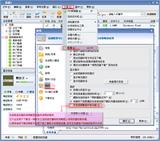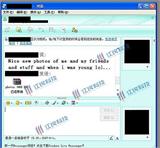The Past 25 Years' Eight Major Computer Viruses: Sasser and Slammer Make the Cut
Introduction: On September 1st, Beijing Time, foreign media today rated the eight major computer viruses of the past 25 years, including the familiar "Sasser" and "Blaster."
Eight Major Computer Viruses:
(1) Elk Cloner (1982)
Elk Cloner is considered the world's first personal computer virus. At the age of only 15, Richard Skrenta targeted Apple II computers to write this virus. Elk Cloner was stored on floppy disks, and when a computer booted from an infected floppy disk, the virus would start running and copy itself to other floppy disks. Due to the use of dual floppy disk drives at that time and the frequent use of floppy disks, the virus spread quickly. However, Elk Cloner only displayed a poem written by the author on the computer, making it more like a prank.
(2) BRAIN (1986)
BRAIN was the first virus targeting Microsoft's DOS operating system. The authors were two Pakistani brothers who ran a computer store locally. Due to the prevalent software piracy at the time, in order to protect the software they sold, they compiled BRAIN based on some foreign materials. When a computer was infected with BRAIN, the screen would display the telephone number of the computer store run by the Pakistani brothers, which was equivalent to advertising for themselves.
(3) MORRIS (1988)
The author of MORRIS was a graduate student at Cornell University, and his father was one of the top computer security experts in the U.S. government at the time. MORRIS infected 6000 university and military computers connected to the Internet, and although Internet viruses had already appeared before, none had spread as widely. The initial purpose of the MORRIS author was not to paralyze other computers but to write self-replicating software. However, due to poor handling of the program loop, the computer would continuously execute and replicate MORRIS, eventually leading to a crash.
(4) MELISSA (1999)
MELISSA was one of the earliest viruses to spread via email. When users opened an email attachment, the virus would automatically send itself to the first 50 addresses in the user's address list, thus spreading rapidly around the globe. MELISSA infected between 15% to 20% of business computers, causing losses of $30 million to $60 million.
(5) LOVE BUG (2000)
LOVE BUG also spread through email, disguising itself as a love letter. Once the user opened the email, the virus would immediately spread through mass emails. LOVE BUG exploited people's curiosity about love letters to spread quickly around the world, causing widespread email congestion and significant losses for businesses.
(6) "Code Red" (2001)
"Code Red" exploited a vulnerability in Microsoft software and was one of the earliest network worms. Since "Code Red" only required a network connection and did not need the user to open an email attachment, its spread was faster and wider. To resist this virus's intrusion, many system administrators had to install a special software patch released by Microsoft.
(7) "Blaster" (2003)
"Blaster" exploited a known vulnerability in Microsoft software. In just one week, it attacked at least 80% of Windows users worldwide, making their computers unable to work and repeatedly restart, and many enterprise users were also affected. To find the perpetrator as soon as possible, Microsoft even issued a reward notice.
(8) "Sasser" (2004)
"Sasser" also exploited a vulnerability in Microsoft software. It would automatically search for vulnerable computers on the network and directly guide these computers to download and execute the virus file, so the entire transmission and outbreak process did not require human intervention. As long as the user's computer did not have the patch installed and was connected to the Internet, it could be infected. Similar to "Blaster," "Sasser" would also cause the computer to repeatedly restart. (Martin)



